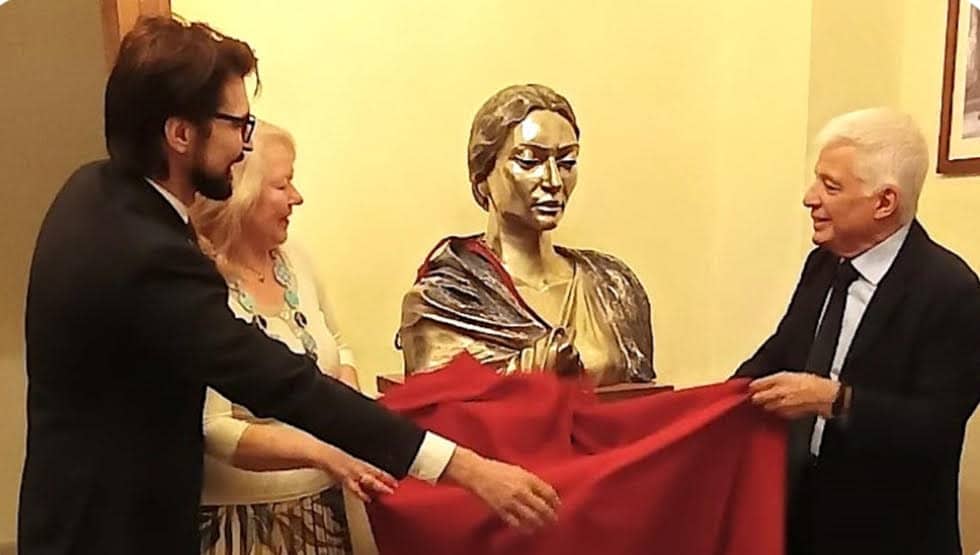

A steel statue of legendary soprano Maria Callas now permanently graces the Opera Theater of Rome in Italy, immortalizing the Greek diva and symbolizing the timeless endurance of her myth.
The statue, weighing 70 kilos (155 lbs.), is sculpted by Nikos Floros, an ambassador of contemporary Greek art and adorns the interior of the opera. It is placed in an area dedicated to the opera singer, which bears her name, Maria Kalogeropoulou, later Maria Callas.
The presence of Maria Callas’ sculpture at Rome’s Opera Theater is particularly symbolic. In 1958, the gala opening of the Rome Opera season broke up in tumult as the singer after the first act of Bellini’s Norma, walked out of the performance, claiming illness. At intermission, Callas, who was booed by the audience, locked herself in her dressing room with a friend and sobbingly told opera officials outside her door that she could not go on. The management had no choice but to cancel the rest of the performance. The episode, known as the “Rome Walkout,” is still remembered today.
In December 2023, the Greek Embassy in Rome—in collaboration with the Opera House of the Eternal City—organized a tribute to “La Divina,” as Maria Callas is still known, with soprano Myrto Papathanasiou and pianist Yiannis Tsanakaliotis. It was a first, symbolic “reconciliation” gesture, over six decades after Callas’ infamous walkout.
The sculpture was unveiled at the presence of the Greek sculptor, and among others, Greece’s Ambassador to Italy, as well as the director of Rome’s Opera Theater Francesco Giambrone, who both stressed the importance of the Callas sculpture as a living cultural bridge of communication between Greece and Italy.

Maria Callas may have died almost half a century ago but her immortal voice lives on, along with her legend. It’s no mystery why Greeks, Italians, and Americans all claim Callas as their own.
She was born Sophia Cecilia Anna Maria Kalogeropoulou on December 2, 1923 in New York. Her family name was later shortened to Callas. Educated in voice in Greece, she began performing at the age of eight.
Callas lived in New York for her first thirteen years. Though she then lived mostly in Europe, she also sang in the US from 1954 to 1974, and English was her native language. She learned Greek from her parents.
In Verona, she met Giovanni Battista Meneghini, a wealthy industrialist who was passionate about opera. Twenty-eight years her senior, he became her impresario and then-husband in 1949.
In 1954, she lost around 30 kilos (66 pounds) and transformed into the ultimate diva, taking top parts in the most well-known operas.
Callas left Meneghini in 1959 to embark on a passionate nine-year affair with shipping tycoon Aristotle Onassis. Their idyll ended in 1968, when Onassis left Callas to marry the widowed Jackie Kennedy.
Callas turned her back on opera in 1965. On February 20, she triumphed in Tosca in Paris. During a performance on May 29, she fell ill, and, on July 5, “despite the advice of her doctor,” she took to the stage for the last time in London, with Queen Elizabeth II in the audience.
In 1973, Callas undertook an international tour of recitals. In Paris, bouquets rained onto the stage in Paris, accompanied by standing ovations and cries of “Viva Maria” despite critics being less enthusiastic.
Callas passed away at her Paris home on September 16, 1977, aged 53, having suffered a heart attack.
